#philippa gregory
Text


"Edward lives as if there is no tomorrow, Richard as if he wants no tomorrow, George as though someone would give it to him for free.”
#i just collapsed on the floor why is he so sassy#saw a man so pretty i started crying#mr. oakes the actor that you are...#george plantagenet#the white queen#twqedit#david oakes#perioddramaedit#smallscreensource#adaptationsdaily#cinemapix#filmgifs#dailyflicks#tvarchive#dilfgifs#philippa gregory#tuseraixa#davinciae#dailyworldcinema#by jen
124 notes
·
View notes
Text
Wrens played a major part in the planning and organisation of naval operations, serving at Bletchley Park and its out-stations, operating machines used in code-breaking.

"Normal Women: 900 Years of Making History" - Philippa Gregory
#book quotes#normal women#philippa gregory#nonfiction#women's royal naval service#wrns#planning#organization#navy#operations#bletchley park#out stations#machines#code breaker#ats#auxiliary territorial service#dover#headquarters#december#40s#1940s#20th century#ww2#wwii#world war two
64 notes
·
View notes
Text
friendly reminder that Philippa Gregory is NOT a historian.
reading or writing books about history don't make you a historian, just like reading, or writing books about neuroly don't make you a neurosurgeon.
you need a master's degree or a Ph. D. in History validated by your peers after years of studying. Gregory has a Ph D in Literature and an undergraduate degree Bachelor of Arts History. so, not a historian.
95 notes
·
View notes
Text
Philippa Gregory and Lazy Research: the Issue With Pop History as Exemplified by the Misinformation Surrounding Geneviève d'Eon in the Book Normal Women
If you frequent bookstores or libraries you might have seen Philippa Gregory's new book Normal Women in the best sellers or most wanted displays. The fact that Geneviève d'Eon, a trans woman, is included in a woman's history book is marvelous. D'Eon has been denied her place in woman's history for far too long. So what's the problem? Well Philippa Gregory's lazy research is the problem.
For full transparency I have to admit I didn't read the whole book. And honestly based on what I did read I probably wont read it because the short section I did read left a lot to be desired. While the section on d'Eon is short Gregory sure can pack a fair bit of misinformation into 7 paragraphs.
The most glaring error is d'Eon's name. Gregory claims her name was Lia however this is simply not true. D'Eon's full name was Charlotte-Geneviève-Louise-Auguste-André-Timothée d’Eon de Beaumont, or Geneviève d'Eon for short. When d'Eon transitioned she changed her first name to Charlotte, but she actually went by her middle name Geneviève, which was one of her baptismal names. The name Geneviève had both personal and religious significance for d'Eon having been given to her by her godmother. She talks about this in the draft of her autobiography:
I did undertake to make a novena to my patron saint, Geneviève, in the hope of gaining insight, since the name Geneviève was given to me at baptism by my godmother, the sister of my father and of my uncle.
(The Maiden of Tonnerre, p9)
She also mentions her name when writing about the joy of being able to live openly as a woman:
At present I am living in profound peace; and my joy is so great that I praise God in three languages so that a greater number of people may partake of the happiness of the angels in this life while awaiting the crown of ordinary martyrs, Nunc Genofeva d'Eon est nomen meum; quam suave et dulce est laetitia mea! [My name is now Geneviève d’Eon; how delightful and how sweet is my joy!]
(The Maiden of Tonnerre, p87)

[Ticket for Geneviève d'Eon's fencing display at Mrs. Bateman's house in Soho, c. 1793, via The British Museum]
The only evidence that suggests d'Eon may have used the name Lia is from a flirtatious letter written by her then boss the Marquis de l'Hôpital during her mission in Russia. L'Hôpital, who was 30 years her senior, calls d'Eon "ma chère Lia" and "ma belle de Beaumont". In other letters l'Hôpital often complains about d'Eon's lack of sexual activity, often making comments about her penis. It's unclear how d'Eon felt about the name Lia or the multiple sexual remarks made by her boss. (see Mémoires sur la Chevalière d'Éon by Frédéric Gaillardet, p16, 77, 80, 94, 99 & 110 for the l'Hôpital letters)
Gregory isn't just confused about d'Eon's name, she also mixes up details of d'Eon's life claiming that d'Eon dressed as a woman during her mission to spy on England in preparation for an French invasion, stating that d'Eon "moved in London society as Lia de Beaumont." I've never seen any strong evidence that d'Eon was dressing in woman's clothes for this mission and Gregory doesn't provide any evidence of this either. Certainly d'Eon claimed to have dressed in women's clothes during her mission in Russia but not England. (see The Maiden of Tonnerre for d'Eon's claims that she adopted a female alias in Russia)
Gregory also claims:
In August 1777, Lia de Beaumont chose a male identity and wore a grenadier's uniform to volunteer for military service in the American War of Independence, but was prevented from joining the conflict
While d'Eon did attempt to rejoin the French army in 1778 & 1779 she did not "chose a male identity". D'Eon asked to be able to rejoin the army as a woman. In February 1779 d'Eon published an open letter to "several Great Ladies at Court" hoping for support in rejoining the army:
Foreseeing that there will be less fighting on land this year than last, I earnestly entreat you to use your influence with the ministers, in favour of my petition (as stated in the enclosed copy of my letter to the Comte de Maurepas) to serve as a volunteer in the fleet of the Comte d'Orvilliers. Your name, Madame, is one to which military glory is familiar, and, as a woman, you must love the glory of our sex. I have striven to sustain that throughout the late war with Germany, and in negotiating at European courts during the last twenty-five years. There is nothing left for me to do but to fight at sea in the Royal Navy. I hope to acquit myself in such a way that you will not regret having fostered the good intention of one who has the honour to be, with profoundest respect, faithfully yours.
La Chevalière d'Eon.
(Originally published in Correspondance Littéraire, Philosophique et Critique, translation by Alfred Rieu in D'Eon de Beaumont, His Life and Times, p233)
Nowhere in this letter does d'Eon claim to be a man. In fact she writes "as a woman, you must love the glory of our sex" (emphasis mine) and signs it in the feminine "La Chevalière d'Eon."
Gregory also includes the following quote from Madame Campan's book Memoirs Of The Court Of Marie Antoinette:
He was made to resume the costume of that sex to which in France everything is pardoned. The desire to see his native land once more determined him to submit to the condition, but he revenged himself by combining the long train of his gown and the three deep ruffles on his sleeves with the attitude and conversation of a grenadier, which made him very disagreeable company.
I have to ask why Gregory felt this needed to be included? Why is Campan's speculation on d'Eon's gender given more weight than any of d'Eon's own writings on gender? Shouldn't we prioritise what d'Eon said about herself over the speculation of an acquaintance of hers?
Why not include this quote:
I would prefer to keep my male clothes, because they open all the doors to fortune, glory, and courage. Dresses close all those doors for me. Dresses only give me room to cry about the misery and servitude of women, and you know that I am crazy about liberty. But nature has come to oppose me, and to make me feel the need for women’s clothes, so that I can sleep, eat, and study in peace. I am constantly in fear of some sickness or accident that will, despite myself, allow my sex to be discovered …. Nature makes a good friend but a bad enemy. If you chase it through the door, it just blows back in through the window.
(Monsieur D'Eon Is a Woman by Gary Kates p71)
Or this one:
If certain modern philosophers do not approve of my conversion, it is because they do not believe in God, the law, or the King. God forgave me, the living law vindicated me, and the legal systems in England and France awarded me full rights to wear a dress. Louis XV and Louis XVI were my patrons, the Queen who is the daughter of the Caesars had me dressed in her court by Mademoiselle Bertin; the very woman who dresses the Queen did not turn up her nose at dressing Mademoiselle d'Eon grandly.
(The Maiden of Tonnerre, p134)
Or maybe this one:
Having been a decent man, a zealous citizen and a brave soldier all my life, I triumph in being a woman and in being able to be cited for ever amongst those many woman who have proved that the qualities and virtues of which men are so proud have not been denied to those of my sex.
(La Vie militaire, politique et privée de Melle d’Eon (1779): Biography and the Art of Manipulation by Anne-Marie Mercier-Faivre)
Gregory isn't alone in the choice to highlight Campan's speculation over d'Eon's own words, Wikipedia also does this, which makes me wonder if she originally got this quote from d'Eon's Wikipedia page. Perhaps Gregory doesn't know what d'Eon wrote about gender because she hasn't read anything d'Eon wrote about gender.
It's clear that Philippa Gregory's research on d'Eon was frankly lazy and nothing exemplifies this as much as her thinking d'Eon's name was Lia. But why does Philippa Gregory think d'Eon's name is Lia when primary source evidence clearly shows otherwise? Well it's certainly a common myth that d'Eon used the name Lia de Beaumont as a alias while working as a spy in Russia. The assumption was originally made by Frédéric Gaillardet in his largely fictitious book Memoires du Chevalier d'Eon. Gaillardet assumes that d'Eon used the name Lia de Beaumont because of the letter from the Marquis de l'Hôpital in which he calls her "ma chère Lia" and "ma belle de Beaumont". Whether or not d'Eon even did have a female alias while working as a spy in Russia is a controversial point amongst historians. However even if we assume she did use the name Lia as an alias its still not really her name.
I don't think I've seen a single historian claim d'Eon's name was actually Lia but I have seen many people on social media claim this was her name. The logic seems to be that if d'Eon used Lia de Beaumont as an alias that it was probably her preferred name. With most secondary sources on d'Eon using her deadname and never identifying d'Eon by either her first name Charlotte or preferred name Geneviève the issue gets confused. Lia seems like the preferable choice of name to people who don't want to deadname d'Eon but also aren't aware of any other feminine name she went by.
But why does Philippa Gregory think d'Eon's name is Lia? Surely Gregory isn't getting her information from social media? Right? But none of her cited sources identify Lia as d'Eon's name. In fact one of her cited sources, D'Eon Returns to France: Gender and Power in 1777 by Gary Kates, is one of the few secondary sources that does mention that d'Eon's name was Charlotte. Is Gregory even reading her own sources?
This issue isn't unique to Philippa Gregory it's a common issue in pop history. If you want to cover a broad topic that will appeal to a wide audience, like 900 years of women's history, you almost certainly are not going to study every aspect in significant detail. Can we really expect Philippa Gregory to do in-depth research into one individual she only talks about for 7 paragraphs? Of course not. So the research gets lazy.
44 notes
·
View notes
Text
“Either you have me or not at all. Either you love me or not at all. Either I am all yours or I am nobody’s. I will have no half-measures with you.”
— Philippa Gregory, from “The Other Boleyn Girl.”
33 notes
·
View notes
Photo

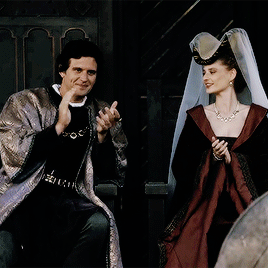

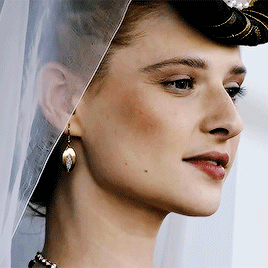
edward & elizabeth in britain’s bloody crown.
#elizabeth woodville#edward iv#the white queen#britain's bloody crown#the war of the roses#war of the roses#philippa gregory#historyedit#perioddramaedit#perioddramacentral#perioddramagif#historicaledit#**
329 notes
·
View notes
Text




Your honor, he is too pretty to have killed his nephews so my client is innocent.
#richard iii#the white queen#like what else do i tag this as#philippa gregory#anne neville#king richard#now his father in low brother cousin would have#but him#no
16 notes
·
View notes
Text
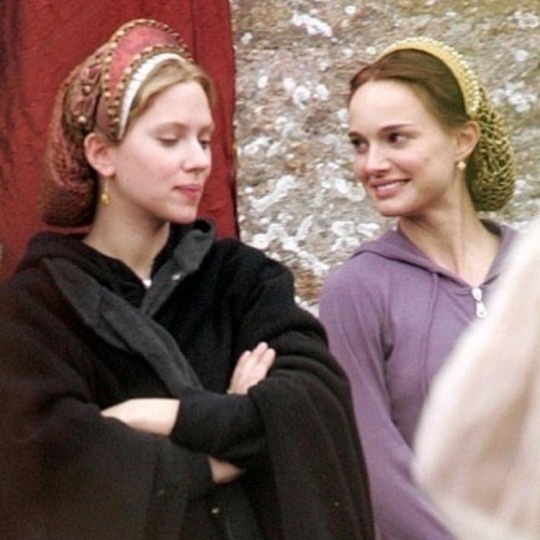
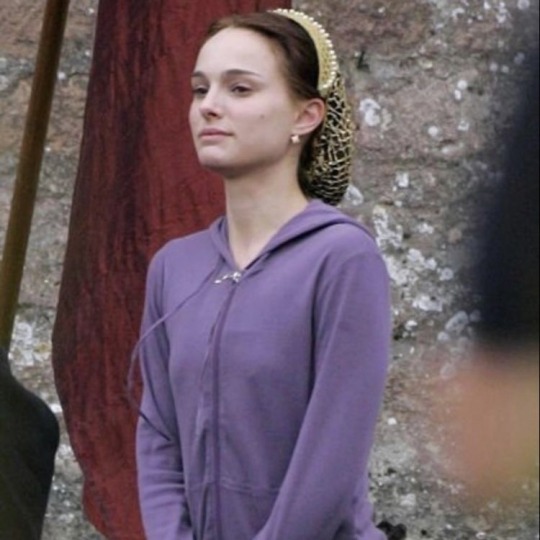
Scarlett Johansson and Natalie Portman behind the scenes of The Other Boleyn Girl
#scarlett johannsen#natalie portman#the other boleyn girl#Justin Chadwick#philippa gregory#historical fiction#period piece#film adaptation#early 2000s#early 2000s aesthetic
58 notes
·
View notes
Text
In 2021, at Suontaka Vesitorninmäki, Hattula, in Finland, archaeologists discovered the grave of a Viking warrior, the body wearing female clothes, on a soft feather blanket with trinkets, and two swords. They believe that the person had Klinefelter syndrome, giving rise to XXY chromosomes. This had probably been a person respected in their eleventh-century society, wearing women's clothing, fighting as a warrior, perhaps understood to be one of the many sexes on the huge spectrum of sexual identity that was then known but which we have tried to forget.
"Normal Women: 900 Years of Making History" - Philippa Gregory
#book quote#normal women#philippa gregory#nonfiction#20s#2020s#21st century#suontaka vesitorninmaki#hattula#finland#archaeology#grave#viking#warrior#fit check#feather blanket#trinkets#swords#klinefelter syndrome#xxy#intersex#11th century
11 notes
·
View notes
Text
Middle- and upper-class families were using contraception from the 1920s to control the size of their families but fear of working-class women's sexuality meant that it would not be until 1930 that the Ministry of Health allowed publicly funded nurses and doctors to give contraceptive advice to poor married women and then only on medical grounds.
"Normal Women: 900 Years of Making History" - Philippa Gregory
#book quote#normal women#philippa gregory#nonfiction#middle class#upper class#family planning#contraception#contraceptives#20s#1920s#20th century#working class#fear#sexuality#30s#1930s#ministry of health#public health#public funding#nurse#doctor#medical advice
10 notes
·
View notes
Photo

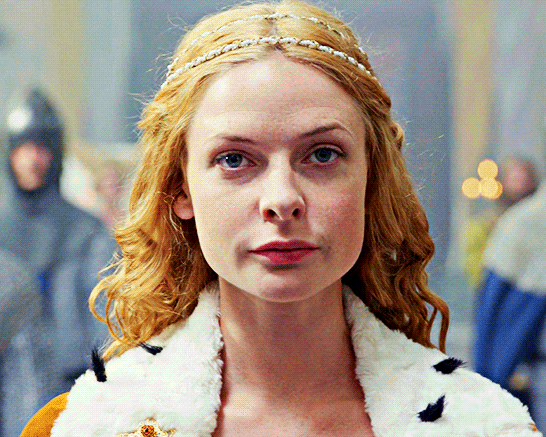





“My new sister. You’re as beautiful as a queen should be.”
#david oakes#george plantagenet#elizabeth woodville#rebecca ferguson#genuinely love their dynamic#i'm actually obsessed with how pretty their faces are#twqedit#twq#philippa gregory#thewhitequeenedit#the white queen#bbc the white queen#perioddramaedit#periodedits#dailytvfilmgifs#tvfilmsource#tvarchive#cinemapix#george x elizabeth#by jen
301 notes
·
View notes
Text
Anne Jane Thornton, a 15-year-old girl, dressed as a cabin boy on a transatlantic voyage to find the man she loved, who had gone to America in 1832. On arrival, she found he had died so she took posts on other ships, calling herself Jim Thornton. On her return crossing to London on The Sarah, a crew member noticed that she was a woman and she was taken to the ship's captain, who kept her on as a crewman.

"Normal Women: 900 Years of Making History" - Philippa Gregory
#book quotes#normal women#philippa gregory#nonfiction#anne jane thornton#cabin boy#cross dressing#transatlantic voyage#america#england#london#30s#1830s#19th century#the sarah#ship's captain#crewman#sailor#jim thornton#the interesting life and wonderful adventures of that extraordinary woman anne jane thornton‚ the female sailor#autobiography
60 notes
·
View notes
Text
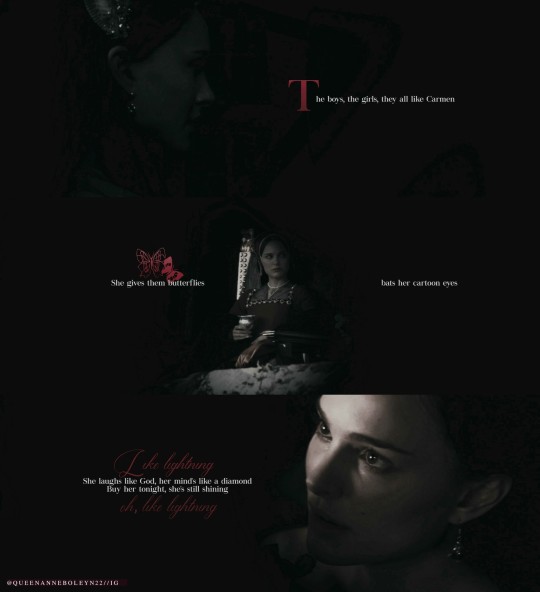
"Anne was particularly admired for her exquisite taste and the elegance of her dress, earning her the praise of Pierre de Brantôme, a seasoned courtier, who noted that all the fashionable ladies at court tried to emulate her style, but that she possessed a ‘gracefulness that rivalled Venus’. She was, he concluded, ‘the fairest and most bewitching of all the lovely dames of the French court.’ By the time that Anne returned to England in 1522, she had blossomed into an attractive young woman. Her slim, petite stature gave her an appealing fragility, and she had luscious dark brown hair, which she grew very long. Her most striking features, though, were her eyes, which were exceptionally dark and seductive, ‘inviting conversation."
#perioddramaedit#anne boleyn#the tudors#history#lana del rey#edit#natalie portman#tobgedit#tobg#historical#historyedit#tudor england#tudor era#tudorerasource#carmen#ldredit#perioddramacentral#tudor period#philippa gregory#anneboleynedit#henry viii#tudor dynasty#tudor#aesthetic#Graphic#queen anne boleyn#eric bana#period drama
69 notes
·
View notes
Text
Wow okay so there’s a whole passage in The King’s Curse where PGregs describes that, after losing her baby in 1534, Anne Boleyn is forced to be happy and carry on as if nothing ever happened because Henry doesn’t want to be married to a woman who isn’t perfect
So PGregs is mindful enough to acknowledge and write that…but Anne is still the villain and Henry is still just a mindless victim of her manipulation
#like i don’t REALLY want to know what goes on in pgregs mind#because i think it would make me go mad#but also…i kinda do a little bit#philippa gregory#anne boleyn
14 notes
·
View notes
Text
Annie Garthwaite's 'Cecily' Optioned for TV
‘Cecily‘, a novel by author Annie Garthwaite about the life of Richard III and Edward IV‘s mother has been optioned for TV by Just John Films, a newly launched company headed by actors Kate Phillips, Amber Anderson and Rosie Day, who have appeared in such shows as Peaky Blinders, Good Omens, Black Mirror and Outlander. It is their first production.
This is great news–finally a TV show set during…

View On WordPress
#amber anderson#annie garthwaite#Cecily Neville#just john films#katie phillips#Philippa Gregory#Richard III#richard my richard#rosie day#television programmes#Wars of the Roses
7 notes
·
View notes
